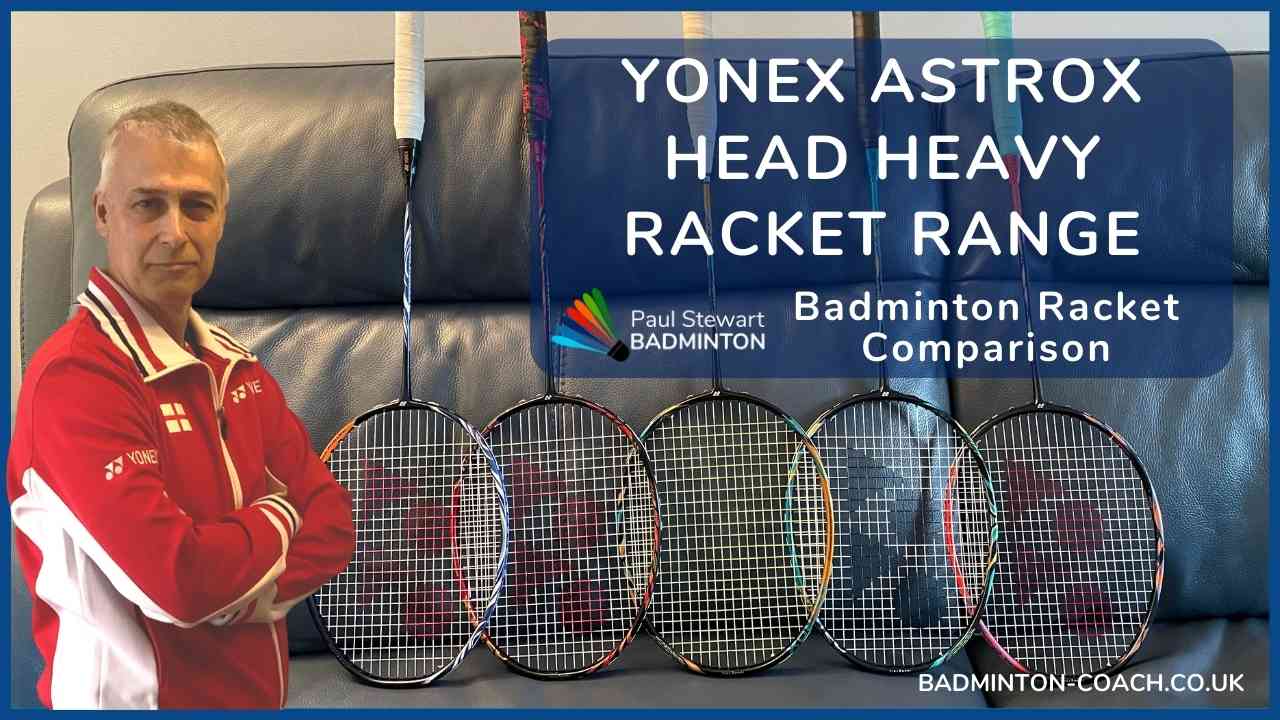A high percentage of games played at club, league, county and international level are mixed doubles. It’s become a favourite in clubs and it’s probably the only sport at Olympic level where men and women complete together.
What still amazes me when I watch mixed doubles in club and league is the inability of some men to truly appreciate the vital role that women play in this partnership.
For some men, even the word partnership is alien. They think of mixed doubles as a variation of singles with a woman also stood on court. How poor is that? If they only could see and understand the art of mixed doubles compared to level doubles. It’s a real thinking persons game, highly strategic where shuttle placement is paramount.
2012 OlympicsThe skill in mixed doubles compared to level doubles revolves around moving formations and finding the mid-point between the opposing pair to create an opening. It’s got more touch, more finesse and more variety dare I say than level doubles. But, it can still be a fast and powerful game.
So why is it that, with all of these attributes, the majority of club and league badminton players fail to understand the game well enough to excel?
The Ego Has Landed
Without doubt, in some cases ego has got in the way. It’s almost below some men to even consider taking part. It’s as though they’ll lose some macho by playing mixed doubles. These are the guys who like to hit the shuttle hard from the rear court and are usually totally clueless at the net. In fact, you’ll probably find that their idea of men’s doubles revolves around a “your side, my side” strategy soon followed by “and I’ll take the back” tactic. The thought of placing the shuttle to win a point hasn’t even entered their head.
Then there’s the player who would like to play good mixed doubles but hasn’t really understood what it’s all about. They’ve got a few good shots in their repertoire but they don’t know how to use them and they certainly don’t know how to get the best from their partner.
Ego’s aside, where are the real pitfalls in the men’s game that leads me to suggest we’re asking the impossible from our lady partners?
1) They have no appreciation of what it’s like to play at the net. In particular, the speed of the shuttle on and around the net. Because of this, they don’t understand the skills involved and what is considered quality play or the opposite.
2) Worst of all, they have this ridiculous ideal that the lady’s place is in front of the doubles service line, just to make the job of intercepting 10 times harder! A super-fast interception is a combination of being in the right place, reading the game and sometimes pure fluke. That’s not to take away the skills involved here, I’m talking about a really fast shuttle with little or no time to react.
3) The number of times the man gives away a short lift and expects their partner to stay at the net and get it back when the opposing man gives it his mightiest smash. Come on, smell the roses, YOUR PARTNER IS NOT SUPERWOMAN! You’re asking them to get in the way of a smash from half court that you probably can’t return stood back in court, never mind intercept at the net. And what happens when the man smashes straight through the woman? You probably know this answer…our really kind man thinks, if not tells his partner to keep her racquet up at the net. Does this sound familiar?
4) Because the man doesn’t understand the net, the only time he plays near it is when he’s smashing at the opposing woman. Other than that, he’s trying to outplay the opposing man.
5) Usually, but not all the time, this man is slow around court, has little or no backhand to speak of, and he’s probably so full of himself he’s slowly running out of partners in the club.
How Do We Begin To Fix This Problem? (a simple guide for women/clubs)
Changing our egotistical or uninformed friend may be one bridge too far, at least if you tackle him head-on! A more subtle approach may work better.
1) Ladies, don’t listen to men who ask you to stand in front of the doubles service line. Instead, take a step back and work from a base that is say 30cm behind the doubles service line. As long as you can move forward and take the shuttle early at the net, then you’ve no problems. You’ll find you intercept more shuttles because you have the time to see them – isn’t that simple!
2) Ask someone in the club to help you to defend better, as though you were playing level doubles. Master a block return which is the best approach in mixed to get you back into your strongest formation. At least it’ll show that one of you is thinking on court.
3) Develop a really good low serve. It’s vital to winning. A good low serve will force your opponents to lift the shuttle. Keeping the attack will cut out many of the problems in mixed which usually stem from a defensive position.
4) Work on moving backwards to return a flick/high serve. Make sure you hit the shuttle downwards and quickly return to the net. Develop a nice easy straight fast drop which travels past the lady and in front of the man. This gives you time to move and makes your opponents hesitate (sometimes both leaving it or both going for the same shuttle).
5) Don’t be a wallflower. If you say nothing you’re not helping the partnership. If you’re positive you’re more likely to get a positive response from your partner. Tell him what you’re going to do so he knows what to expect.
6) Ask some of the better players who your partner may respect to have a “chat” about mixed doubles. If there’s a coach around, get them involved. Ask questions when your partner is with you about what went wrong or how to improve. They may not like a truthful response but at least the message is delivered.
In lower leagues and clubs overall skill levels in both men and women may not be as high as first division, but you can still have extremely exciting games and matches. Cutting out simple mistakes is one area that everyone can massively improve on, in particular serving and receipt of serve.
After that, understanding roles in doubles and mixed doubles are vital to winning. There is no reason why anyone should be expected to be super-human to return the shuttle; we just need to apply a huge dose of realism. After all, usually, it’s not the fault of the player for failing to return a shot, but moreso the failing of the player for creating the situation in the first place!
Mixed doubles in particular seems to get more attention for partnership fallouts than level doubles. The main reason, I believe, personalities aside, is that the man is asking way too much of their partner and is failing to create the situations where the lady is shining in the game. Some men seem to feel the need to virtually bully their partner and wonder why they don’t win or stay a partnership for long.
When you spell it out this way, it’s simple to see, not as simple to fix. Clubs should not tolerate this behaviour from anyone and it’s up to the powers at be to make examples of these people. Aside from that, the basic requirement here is education. Ignorance may not be a good defence but unless we educate men in clubs and leagues to understand the roles, skills and reasons why they are so misguided, then nobody is going to win! Women also need educating too so they try to maintain the strongest formation.
I hope my suggestions help in changing a potentially nasty situation from arising. As always, I welcome comments and unless they are full of mindless profanity, they will be published on my blog.
By writing this article, I’ve not set out to cover every potential aspect of this topic otherwise I could have written a book. This article is meant to provoke to a degree, question and try to draw some conclusions as to what can be done to solve this age-old problem. I know when I’ve been badminton coaching and asked questions about mixed doubles, the women like and respect my views, some men remain quiet! I rest my case.











Hi Paul,
I have a couple of questions in mixed doubles tactics.
1. When my partner is serving, and he wants to use a flick serve, then where should I move after he has served? I’m asking because I’m standing in front of/on the service line, and it’s difficult to move backwards and move backwards cross court, since that is typically where I should stand for defence. I do realise that the whole point of flicking is to take the opponent by surprise, but sometimes, they just aren’t surprised enough, or able to predict the service and this is when i’m not able to move cross court backwards fast enough to defend a reasonably well hit smash. What should I do?
2. When i’m receiving a service, i’m usually standing a foot behind the service line, so that i can get to a flick serve if needed, as i’m not quick enough if i stand closer. But now, when the opponent serves a good short serve, my options are limited to a lift or a drop, and rarely a drive as i pick up the shuttle a little lower than preferred. I usually choose to drop the shuttle, to play safe, but my options become more limited, with only drops and even then I tend to make mistakes, when i try to keep the return too close to the net. What else can i practice/try as a service return?
I just found this article, and I hope you can help clarify my doubts! Thank you so much for this article!
-Anusha
Anusha
Many thanks for your questions.
1) you need to be in place so perhaps you have to consider where you stand when your partner serves. It’s worth testing a few variations to see if there is an improvement.
2) From where you are standing you should be able to push the shuttle into the mid-court ensuring the push quickly passes the your opposing lady and yet falls short of the man to ensure he is lunging hard to pick up the return. Alternatively, you should try punching the shuttle low into the corners.
Paul
Hi Paul, I know I’m abit late but I just read the article and thanks for the great advice. My partner and I use the usual front and back formation, and he is a much more advance player than I am so I don’t have any worries about him covering my back. My problem is:
1) whose responsibility is it when the shuttlecock falls in the mid court area? His point is that I should try to intercept it, but as I am mainly in front, there are times where I feel like the shuttles are just flying past too fast for me to judge if I can reach them and play a good shot or if it’s too high/ back for me and thus his responsibility.
2) Also, whenever he clears or lifts the shuttle he expects that im able to get every ball on the front line from the deepest ends of both sides, but usually i am already positioning myself crosscourt from the shuttle so as to try and recieve any smashes, and im finding it difficult to shift from that position to lunge all the way to the other side if the opponent decides to do a sudden drop on the deep end of the other corner.
3) If he’s in a rally between him and the opponent, he expects me to intercept if it passes near me. However, in a fast rally, the shuttle is hit back and forth between him and the opponent usually in straight drives and at high speed, and even if it does pass by me, it’s zooming by around me too fast for me to intercept. If I try I tend to knock the shuttle off course or make a bad return. He’s known to be fast in court and he expects the same, which makes it tough because while im not slow, im not as fast as he is.
So my question is; what am i doing wrong, or is there a strategy that might help us resolve these problems?
Thank you!
Shing
What a fantastic set of questions.
My guess is that your partner wishes you to step in front of the service line and perform miracles. Let me answer your questions in the order you have asked them.
1) it is the man who is responsible for any shots in mid court that have past the lady in the forecourt. It is not up to the lady to step back onto a shot or reach back to intercept. Your partner has completely unrealistic expectations of what you are capable of doing form your current positioning. As long as you have your racket in play around net height then you are doing all that can be expected of you.
2) Does your partner clear or lift deep into the corners. If so, if you are positioned correctly then you stand a chance of intercepting a smash. If he lifts up the middle then you are a sitting target and have no chance. At times like this you are in survival mode. Keep your racket in front of your face for protection.
3) This is the same answer as question one.
Without seeing you play as a pair, my guess is your partner is simply asking way too much of you. I’d be interested to place him in a game where he plays with a strong man against a strong mixed pair and have him pay the lady. It would be interesting to see how many shuttles he intercepts if he stands where is expects you to stand.
The idea in mixed doubles is that you play very similar to level doubles in terms of positioning. If your partner is hitting downwards from the rear court I could place you around 1 metre back from the front service line. This way you are in mid court and can look forward to intercept shuttles that are mostly in front of you. If he plays a drop shot you begin to close in to the net so that you threaten to cover a net shot return.
If your partner lifts to the centre of the court, I would expect my partner to take a level doubles formation. I’d be looking for a block return from her from the smash and to follow the shot into the net to threaten a net shot.
If your partner is playing a shot from the mid court I would expect you to stand behind the front service line. It’s easy to step into the net to threaten but you’re more likely to intercept a loose shot because you’re not too far forward.
In this case and without seeing you both play, I’d guess that there’s nothing wrong with you and more wrong with your partner. He wants a wonder woman partner who has the skill level above that of an international player. If you see any Krypton lying around maybe that it will help you. Your partner is asking way too much and needs to sort their game out first.
I hope this helps.
Let me know
Paul
Hi Paul, I have a question about service in MX doubles: When I am serving, could my female partner stand in front of the short service line? Thanks
Justin
The answer is yes, but why would you wish to push her so far forward that she will struggle to intercept any returns? Also, I take it you are pushing your base forward to be closer for serving. This means you are seriously exposing your rear court and placing a great strain on yourself to retrieve with a good attacking shot.
Paul
Thanks for the advice Paul. I’m on my high school team and usually specialize in MD but ever since we got, excuse me for saying so, an extremely inexperienced coach, almost all team members must play XD. And because in MD and XD people stand a little differently my serves are just not as good.
Having good service technique is paramount in doubles. I didn’t learn until recently that the service should be hit near the top of the racket (as opposed to the normal ‘sweet spot’) and that the striking motion is done only with the fingers and wrist. Here’s a teaching video by Cai Yun: http://www.youtube.com/watch?v=aIJ2LC9wCkc
I have to agree with you regarding the importance of a good technique for serving.
If you watch the players, there are many different styles of serve. Finding the style to fit you is the important factor here.
Many thanks for the link too.
Paul
Just joined the forum, probably too late to make comments on this topic, but I really feel like contributing to this topic from a female player point of view. I used to play mixed doubles a lot (when I was fitter and faster) and enjoyed staying at the front court. Paul is absolutely right – playing at the front is not very easy as we have less time to respond to shots and sometimes it can be quite scary to stay at the front when you partner hit a short lift. One thing really standing out is that I struggle with the games playing too many flat shots/drives, especially cross drives. I am not sure if it is because I am too slow for those shots or not, but I do feel that I have much less opportunities to be involved in the games.
I think communication is very important. I prefer to have a quick chat with my partner before the game to let him know what to expect, such as I will drop or clear to the lady when I am pushed to the back, but I will move forward straight after the shot. This way, my partner knows that he will need to cover any clears to my side after this shot. If my partner is good at defense, I will make it clear that everything goes between us when we are in defending position, my partner needs to take it. Also a quick chat between points is helpful (it may not help us to win the game, but at least we tried out best) to know what didn’t work and what we would like each other to play a bit more (ie, push to the mid court instead of dropping to the front court if the lady is very fast).
Kitty
Most players have problems with cross court drives for two reasons
1) they are pushed too close to hte net to be any use whatsoever
2) they do not face the shuttle and are positioned facing the net. This means the shuttle is travelling across your body rather than travelling towards you – very different. ALWAYS position yourself so that you face the shuttle.
Paul
Hi Jordan
Let’s look at this a number of ways…
Your partner may be tired of having shuttles fired at her and perhaps thinks that you lift the shuttle too much. So, before you start messing with her game, why not consider the circumstances that cause this situation and see if you can change your response. Instead of lifting, what else could you do?
Whilst i fully appreciate what you’re saying, the key is to attack rather than defend. Look at your attack as a pair first of all and see if you can find out how to improve it.
The other thing you can work on is making sure that when you do lift, you lift into the corners and get a good length. You stand far more chance of getting the shuttle back as your opponents smash cannot penetrate the same from the back line.
I do think you need to talk to your partner and find out what’s going through her mind. The key to improving together is co-operation. You can start by saying something like “I’ve noticed that every time we defend, we lose the point. I think I need to work on a,b,c to reduce the amount I lift. What else can we do as a pair to improve our defence?”
At least this way, you’re criticising yourself first and setting yourself up as the cause which isn’t a bad thing. And, I think you’re more likely to have a good discussion and perhaps work towards resolving this.
Jordan, I hope this helps. Let me know what happens.
To your success.
Paul
I notice you’ve gone over the woman’s defense in the game. I’m having a lot of trouble with this lately, particularly on match nights, after the shuttle has been lifted to the opponent’s court, my partner has a habit of either staying at the front of the court and simply ducking, or she comes out and makes no attempt to hit the shuttle. I’ve been wondering, taking into account I now know that she doesn’t like defending, should I try to improve my defense further? Or would I be better off trying to persuade her to start playing a part in our defense and risk her thinking of me as one of those ego-maniacs you talk about in the article? Any extra advice here would be grately appreciated, thanks.
Simon
Many thanks for your comments.
I purposely didn’t go into too much depth and cover defence because the article would have become way too long for a “quick read.”
I agree with all your points. I’m not surprised the ladies you have spoken to have that attitude – who can blame them? For years they’ve been asked to do so many different things and then get blamed when they make a mistake.
Some men will welcome this article and your additional comments. Many will ignore it because they’ll play their way, whether it’s right or not. But, if they truly read it and saw sense they would actually get better results – once they get the teething issues out of the way.
Just to confirm your points on defence. Ideally a woman should lift cross court so she is already in position to take a cross court return. That’s not set in stone. If she’s fast enough and her lift is good enough, she can choose any corner – just don’t lift up the middle of the court.
Likewise men, as a rule, should try to lift straight so both them and their partner are already in position to take their respecitve returns. Again, this depends on a number of factors such as speed etc but the main factor should be how late they are getting to the shuttle.
Watch out for more articles and videos soon.
Best wishes
Paul
Thanks for this – I was taught pretty much the same thing by another Yonex-sponsored coach at university, and one of the main problems I find in explaining this to the ladies at our club is that they’ve heard a different method for playing mixed from every man they’ve ever partnered, and why is mine going to be any better? The fact I can point to this coming from a current advanced coach rather than ‘my friend Dave’ will help me there!
*prints it out and sticks it on the wall at club*
The only thing I remember being taught as a key point in mixed play, that I don’t think you really mention, is the defence – if and when you do have to lift the shuttle.
What I remember being taught was
1) avoid lifting if you can
2) if you do have to lift, lift to a corner, not up the middle
3) lady stand cross-court, a little behind the service line as always, to get cross-court drops and flat cross-court drives (playing them often down the line past the opposition lady for winners)
4) man stand down the line, getting everything down the line (including down-the-line drop shots which ladies always think are theirs), and also getting cross-court clears.
Does that sound about right to you?
I tend to find when describing the tactics to people completely unfamiliar with mixed, that knowing to stand in that way to defend sets them up for most other things to fall into place. It also nicely assigns both men and women an area of responsibility which helps make it feel like a team game from the start.